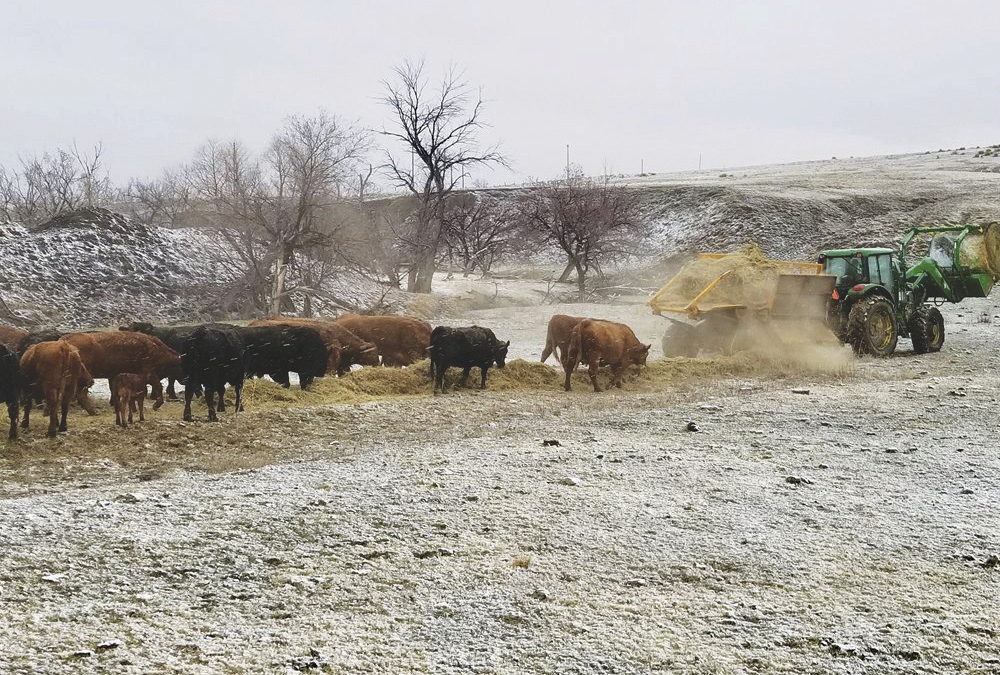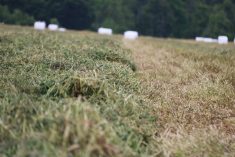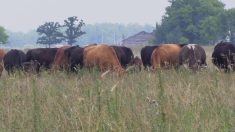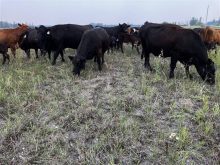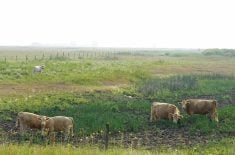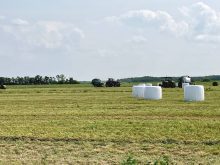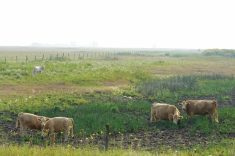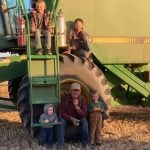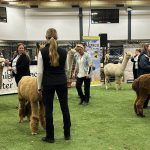
Nitrate poisoning has claimed a number of cattle this year, provincial livestock specialist Pam Iwanchysko has confirmed.
“It’s been a tough go, in that regard,” she said, noting that, in some of those cases, equipment issues kept producers from properly processing bales and mixing high- and low-nitrate feed properly.
When that high-nitrate feed was also the most enticing, boss cows dug right in, getting a disproportionate share of nitrates.
Why it matters: The drought impacts from 2021 keep coming as producers are finding dangerously high nitrates in what little feed they do have.
The province has seen a long — and growing — list of feed tests coming back with extremely high nitrate levels this fall.
Read Also
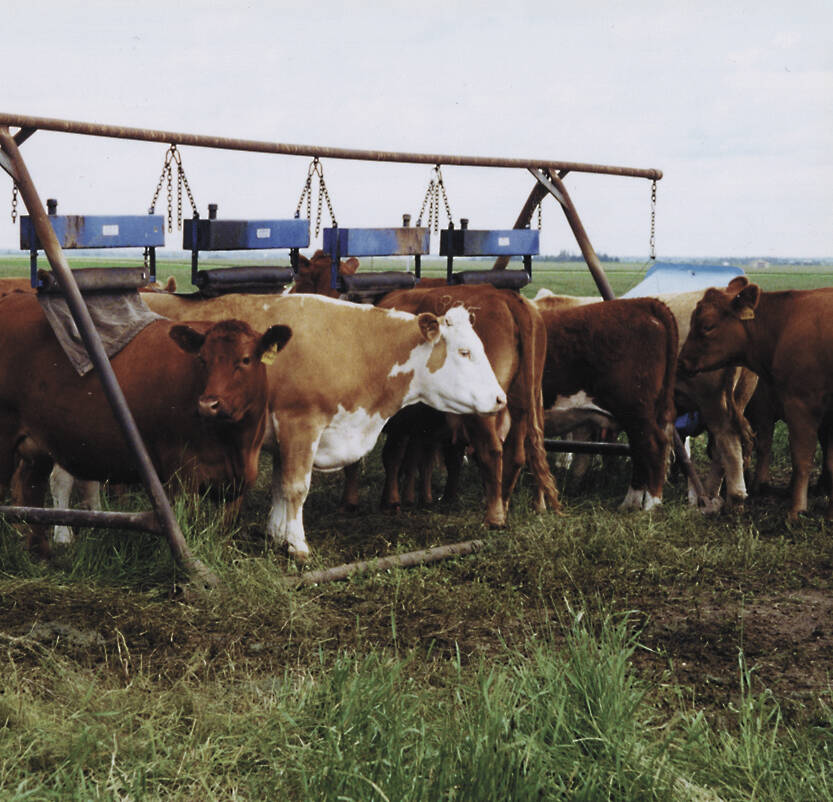
Shifting standards on cattle parasite control
Parasite product resistance has more farmers and veterinarians thinking differently about how to control issues like lice or worms.
It is an unfortunate, but not unexpected issue in a year that has seen the worst drought in recent memory.
Often a hail or frost damage concern in better years, and more often cropping up in annuals, this year’s drought conditions have pushed nitrates near the top of the agenda for producers trying to finalize winter feed plans.
In reality, Iwanchysko reminded during a webinar hosted by Manitoba Agriculture and Resource Development in early December, high nitrates are an issue of plant stress in general, and anything that causes the plant to stop growing while nitrogen is still being taken up — in this case, drought — can be the root of a nitrate oversupply when that forage is harvested.
When fed, the result can be an animal starved for oxygen, as the nitrate is converted to nitrite, builds up in the blood, and ties up hemoglobin.
Questions on high feed nitrates, and how to feed that forage safely, have been the paramount topic of Iwanchysko’s phone calls with producers, she said.
“That’s the question I got the most this fall and I’m assuming the same was holding true for many of my co-workers across the province,” she said. “I think a lot of producers were exercising caution, so I’m glad to hear that and nitrate testing was a priority for many because it was such an unusual year.”
Experts cautioned about nitrate risk already in midsummer, as the seriousness of the drought became increasingly apparent.
In August, feed consultants from Clearwater to Winnipegosis expressed their misgivings to the Co-operator, saying that they expected at least some issues. The question would be, where and how extensively would those issues turn out to be?
Where’s the bar set?
Provincial guidelines cite anything with 0.3 per cent nitrate or less as safe, while producers with test results up to 0.6 per cent may want to keep that feed to half the ration or less, if their herd is stressed.
It is over 0.6 per cent that there are real problems. Any feed testing between that and 0.9 per cent should not be the sole source of feed, according to guidelines, while over 0.9 per cent is considered generally dangerous.
While extension staff and feed experts routinely push for feed testing, conditions this year added yet more urgency to those pleas.
“The nitrate test isn’t extremely expensive. It costs $40 to get that nitrate test done and you don’t have to worry about a dead cow… I think always erring on the side of caution is recommended and just take into account where you’re putting those cows and when,” Iwanchysko said. “Areas of high fertility, areas of high-manure applications, those are the kinds of things that we talk about with regard to nitrates.”
Despite Manitoba’s Interlake holding the dubious honour of being one of the worst-hit drought regions of Western Canada, however, Iwanchysko says there has been no geographic hot spot for high nitrates. Rather, tests have been just generally high province-wide.
Her record nitrate test finding was between Portage la Prairie and Winnipeg, she said, and was actually found on regrowth.
“That just shocked me, because I wouldn’t have thought that would have been the case on regrowth,” she said, noting that under normal conditions, she would have expected that the plants would have used up some of those lingering nitrates in the process of regrowing.
The culprit, she suspects, is yet another wrinkle of the drought as the poor growing conditions and possible fertilization left a wealth of nitrate in the soil, nitrate that was not leached away thanks to lack of rain. When late-season rains did come plants began growing and tapping into that nitrate.
Producers were well aware that late-season grazing after a drought may come with some risk, Iwanchysko said, noting that none of the wrecks she has heard of were linked to fall grazing. Instead, she said, producers were prudent in keeping cattle out on those fields for short periods of time as nitrate tolerance built up.
Cattle eased into that kind of exposure (the livestock extension specialist advised producers to start with one hour in a problematic field and slowly increasing the time), have less chance of a wreck, she noted, as do cattle that are supplemented with other dry feed during that ramp-up period.
The province says that a cow acclimated to high nitrate over two to three days will see a significant jump in nitrate-reducing microbes, a population that will then take up to three weeks to return to baseline.
Reproduction impact
The issue also has implications for next year’s calf crop — a crop that, if the producer is among those forced to cull hard due to feed shortages, might already be reduced.
The same lack of oxygen for the cow can have serious issues on a calf fetus, even if the mother is less impacted.
High feed nitrates are linked to abortion, usually within the first two weeks of the cow being exposed to those nitrates. According to a resource published by Alberta Agriculture and Forestry, that risk is particularly high if that exposure happens in the first trimester of pregnancy.
The same issue in more developed fetuses may translate to premature and sickly calves, early calf deaths or convulsions.
Managing nitrates, then, might be critical to protecting what calf crop is there, Iwanchysko noted.
Recourse
A high feed test, of course, does not necessarily mean that feed is useless. Outside of blending known nitrate-heavy feed with other forage, producers are urged to ease into any risky feed, in the same way producers are advised to slowly integrate risky grazing.
The other option, Iwanchysko noted, would have been to ensile some of that questionable feed, a process that generally decreases nitrate risk.
In grazing, she noted, producers might dodge the issue if they don’t force animals to feed close to the ground, since the bottom part of the plant had the highest nitrate concentration.
Producers may also want to check their water, even if feed tests aren’t showing critical levels of nitrate, and to limit cattle access to weedy patches around yard sites, which may be providing another nitrate hot spot. Water nitrates can exacerbate any high nitrates in feed, giving cattle a double whammy, Iwanchysko said.
The province is also urging producers to be on the watch for general toxicity, not just nitrates. While one of the few upsides of the drought meant that producers could cut new areas, such as slough bottoms, the province’s extension experts also warn that those areas are also prime habitat for toxic plants like water hemlock. Prussic acid poisoning is another threat on the department’s radar.


